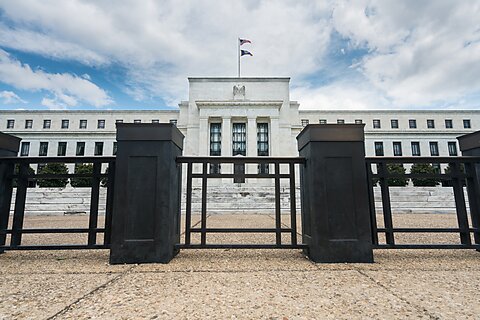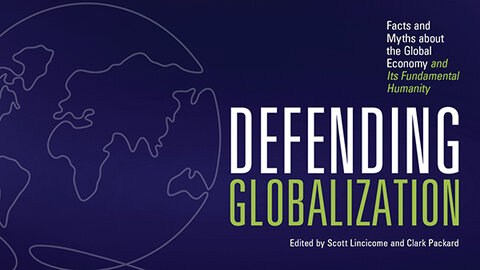
Federal Reserve Chair Jerome Powell was recently questioned over growing concerns that a US central bank digital currency, or CBDC, might be launched in the near future. Central banks around the world are leading the charge for CBDCs, so it came as a welcome surprise for many when Chair Powell said, “We’re nowhere near recommending or adopting a [CBDC].”
Still, there are several open questions that need to be addressed.
Is the Fed Working on a CBDC?
When testifying before the Senate Banking Committee, Chair Powell said, “We’re nowhere near recommending or adopting a [CBDC] but … the thought was that the government could create a digital form of money that people could then transfer among themselves.” Powell went on to say, “Now, of course, that raises a concern that if that were a government account, then the government would see all your transactions.” He then said that is not something “we would stand for or do or propose here in the United States”—a questionable statement given the surveillance under the Bank Secrecy Act regime, but a welcome one.
Clarifying his stance further, Powell added, “If we were ever to do something like this—and we’re a very long way from even thinking about it—we would do this through the banking system.” In other words, Chair Powell was careful to note that if the Federal Reserve moves forward with a CBDC, it would do so with what it calls an intermediated model (more on that below).
Shortly after the hearing, Representative Tom Emmer (R‑MN) argued that it’s hard to take some of these statements at face value. For example, Representative Emmer pointed out that officials from the Federal Reserve had recently informed congressional staffers that a CBDC was a key duty of the central bank and that the Federal Reserve was hiring positions related to CBDC development.
Likewise, the Human Rights Foundation’s CBDC Tracker shows that the Federal Reserve has been conducting studies, experiments, and pilots for years to research and develop a CBDC. The Federal Reserve even announced its Technology Lab was “expanding experimentation” with CBDCs (among other things).
Reinventing the dollar system is no small feat, but it’s easy to see why many people couldn’t help but be confused by the suggestion that the Federal Reserve has done next to nothing or is nowhere near “even thinking about it.”
A few days later, Punchbowl’s Brenden Pederson asked Chair Powell at a press conference to explain what exactly the Federal Reserve is doing as far as developing a CBDC goes. Chair Powell replied,
What we are doing—and I think what every major central bank is doing—is we’re trying to stay in the frontiers of what’s going on in digital finance. … [A CBDC] has applications in wholesale finance [and] in the payment system. To serve the public … we need to be knowledgeable about all that. So we actually do have people trying to understand things. But it’s wrong to say that we’re working on a CBDC and then we’ve secretly got a lab here where we’ve got one and we’re just going to spring it on Congress at the right moment. We don’t.
It is fair to say that the Federal Reserve has not been secretly working on these issues given its announcements and publications on the issue. However, the experiences during both the pandemic and the global financial crisis are clear evidence that the Federal Reserve can take unprecedented actions and do so rapidly.
Whose Authority is it Anyway?
During the Senate Banking Committee hearing, the question of authority came up as well. Senator Cynthia Lummis (R‑WY) asked, “Do you still agree that the Federal Reserve cannot introduce a US central bank digital currency without congressional authorization?” Chair Powell replied, “Yes, I do.”
However, when responding to Pederson at the press conference, Chair Powell gave a slightly different answer, saying, “It would take legislation by Congress, signed by the president to give us the ability to do what we think of as a CBDC, which is really a retail CBDC with the public” (emphasis added).
This hedging is important. It’s quite similar to when he said last year that there are “potential forms of a wholesale CBDC” where the authority is unclear. But it’s also important given the Federal Reserve prefers what’s called an intermediated CBDC.
The problem stems from the distinction between the different forms a CBDC can take. Generally, discussions of CBDCs refer to the retail model as a direct CBDC. In this model, people have accounts with the central bank and the central bank directly manages their use of a CBDC. However, in its 2022 CBDC report, the Federal Reserve focused on an intermediated, or indirect, model where the CBDC is still used by individuals but the accounts are managed by third parties (e.g., banks and credit unions).
From a citizen’s perspective, the difference between a retail CBDC and an intermediated CBDC is not critical. Both models involve a CBDC that would ultimately be used by the general public. The problem is that the intermediated model presents a unique issue in the United States. The Federal Reserve Act prohibits the Federal Reserve from offering accounts to individuals (i.e., what occurs with a retail CBDC provided directly to individuals). In contrast, an intermediated CBDC would get around this requirement because third parties would maintain the accounts on behalf of the Federal Reserve. In fact, the Federal Reserve even said as much in its CBDC report,
The Federal Reserve Act does not authorize direct Federal Reserve accounts for individuals… Under an intermediated model, the private sector would offer accounts or digital wallets to facilitate the management of CBDC holdings and payments… Although commercial banks and nonbanks would offer services to individuals to manage their CBDC holdings and payments, the CBDC itself would be a liability of the Federal Reserve.
Conclusion
Chair Powell expressed a bit of frustration when he was questioned about CBDCs at the press conference. If he would like to avoid future frustrations, there is a simple remedy. As I recommended last year, the Federal Reserve should issue a statement addressing where things currently stand. In particular, the statement should answer the following questions:
Considering the Federal Reserve’s existing work on CBDCs, what specific criteria are the Federal Reserve seeking that would influence it to make an official decision on whether it would or would not recommend launching a US CBDC?
Does the Federal Reserve believe it has the authority to issue:
(A) a retail CBDC?
(B) an intermediated CBDC?
(C) a wholesale CBDC?
Addressing these questions and committing to not issuing any type of CBDC without authorizing legislation from Congress would go a long way to clear any remaining confusion.



















